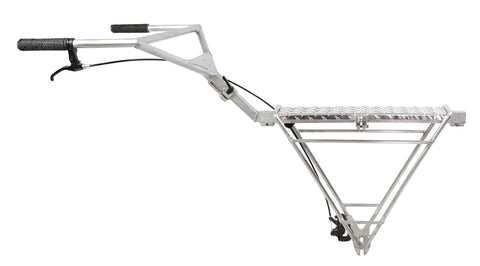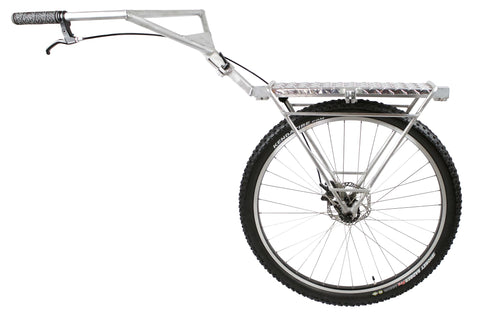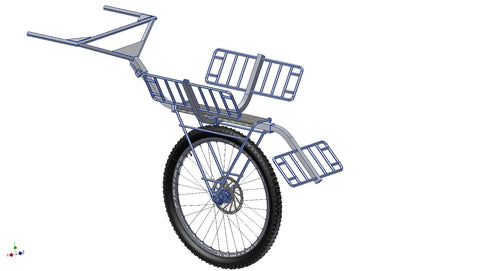Prepper Bug Out Bag: Considerations for Survival and Mobility
What are the odds that you’ll have to bug out during a Zombie Apocalypse? For sure, not as high as the potential for bugging out during a weather emergency or natural disaster. Yet, somehow, when you go to locate a prepper bug out bag online, it seems they’re always stuffed with weapons to keep the hostile hordes of the undead from eating you alive - instead of focusing on the more useful items, like food, water, and shelter.
The fact is, if you just buy any bug out bag, you’ll likely end up with items you don’t need or want, adding weight and limiting your mobility in the event of an actual emergency. That’s why many preppers choose to create their own bug out bags and have several put together for different types of emergencies. To get started making the best bug out bag, focus on these 10 survival categories and include some of the recommended items in the list.
How to Make Sure Your Prepper Bug Out Bag Is Ready for Mobile
Give yourself the option of creating multiple bug out bags to store in different places, like in your car (just in case the earthquake buries the one at home), to increase your odds of survival. Further, think about the types of emergencies you are most likely to face and get down to the basic, practical items, to store in your prepper bug out Bag (BOB), not the ones that capture your imagination most. Consider using a Honey Badger Wheel stored in your car and/or at home. It will allow you to carry all the gear, water, and food you need to guarantee the survival of you and your family. Use this list for starters, and expand from there.
Water - Carrying water is heavy, but carrying a bladder and knowing where to get water is practically weightless. If you want something more durable, try a stainless steel water bottle. The CDC recommends to plan for 1 gallon of water per day per person during emergencies. Preppers prepare ahead of time by locating water sources on maps in their vicinity, using bladders and hydration packs to store water on their person for greater mobility, and having water purification methods at their fingertips, whether it is by using a Lifestraw, Sawyer Mini, water purification tablets, or filtration pumps.
Food - You want food that is long-lasting and lightweight. Freeze dried foods that are high-calorie meals are essential to help you bug out faster. Avoid meals that require heating when you first bug out and opt for some that are ready-to-eat, like jerky, energy bars, or MREs and dehydrated foods that spring alive with water. Soluble protein powders are also a quick meal on the go. You won’t have time to hunt down your food at first, so don't even try. Don’t forget to include vitamins and barter foods (instant coffee and chocolate), as a supplement to nutritional foods as well.
Clothing - Get wet, and your chances of survival decrease dramatically. Those hooded water ponchos may look funny, but they can keep you dry in a downpour and, folded, can fit in an Altoid tin, along with a sewing kit. Thermal underwear is a must in wintery weather, as so are more than one pair of wool socks and undergarments. Get some decent fleece-lined jackets with pockets too. Gloves and hiking boots are also de riguer items, but if you’re smart you’ll have them tied to you BOB ahead of time, since you never know when you’ll need to just grab and go. Hats with a visor, sunglasses, reading glasses, one or two scarves or shemaghs, can help keep dust out of your eyes and lungs. Dress in layers before you bug out, and you won’t have to carry as much of these items in the BOB.
Shelter - Expert preppers know it’s not the size of your tent that matters, but how well it does the job. Pick a tent that is easy to assemble and small enough to do the job (meaning less weight). Include a tarp for extra protection, with at least 50 feet of parachute cord to be able to assemble it between two trees, if necessary. Store a lightweight, space blanket in your BOB as well as insulated sleeping bag. If you don’t mind a little extra weight, adding a ground mat can make a big difference in how well you sleep at night and how sore you wake up in the morning.
Hygiene - Soap and travel size toothpaste, tooth brush, toilet paper, sanitary napkins are going to be the big items for hygiene. However, packets of baby wipes can help in both hygiene and first aid. Include a mirror for personal grooming and straight razors, that can serve multiple purposes too. Add a small first aid kit, in case you’re injured too.
Mobility - Make sure you have some good bearings and know you’re going away from a disaster area and not towards one. Maps, a compass, and money can gain you valuable time. If your kids can’t keep up, you want to load more gear than a BOB can take, or you do manage to grab some big game, how are you going to keep moving? The Honey Badger Wheel can be put on your back outside the BOB, until you unroll it to help move large loads from one spot to another using the Heavy Gear Swivel accessory. Increase your mobility by being on a bike, instead of on foot, and you can still take the Honey Badger Wheel, using the pannier accessory. When you need to hoof it, use the Honey Badger Wheel and load it up. It will carry more than you can imagine including kids. And keep one in your car. It is collapsible and ready to load at a moment's notice.
Lighting - Use lighting that doesn’t take too much power, for instance, an LED headlamp, glowsticks, flashlight, candles, and solar lights. Old school candles are great for emergencies, but not as good as a headlamp.
Communications - You can go old-fashioned with paper and pencil or use a smartphone. Carry a portable battery pack for the smartphone or get a small Biolite camp stove you can use kindling to help also generate a charge for your smartphone and LED lights, while having a small stove available. Use an emergency radio with a hand crank. Remember, the grid may be down and your cell phone may not work.
Self-Defense - The choice to arm yourself during an emergency is a personal choice. A gun can be used against you as easily as it can be used to defend one’s self. The best self-defense is invisible. However, carrying a weapon when you know how to use, particularly concealed, is the best recommendation. Learn how to keep a low profile, use camouflage, and take some self-defense classes. Keep a knife or two handy; They’re also good for a variety of other purposes.
Regardless of the emergency, be prepared. Have a prepper bug out bag ready. This does not need to be an obsession or something we worry constantly about. We only need to be prepared. Consider the above needs and there is no reason for worry.














